In the fast-changing world of business communications, organizations are constantly exploring reliable, scalable, and secure ways to stay connected with customers and employees. While modern solutions like VoIP and UCaaS have gained traction, one technology that laid the foundation for enterprise-grade calling systems is Primary Rate Interface (PRI).
Despite being around for decades, PRI remains relevant for businesses that require dependable voice channels, smooth call management, and strong integration with traditional PBX systems.
What Is PRI (Primary Rate Interface)?
Primary Rate Interface (PRI) is a type of Integrated Services Digital Network (ISDN) technology designed to transmit voice, data, and video communications over traditional copper telephone lines. Essentially, PRI creates a digital communication pathway between a business’s Private Branch Exchange (PBX) system and the Public Switched Telephone Network (PSTN).
- In North America and Japan, a PRI line typically consists of 23 bearer channels (B-channels) for voice/data and 1 data channel (D-channel) for signaling, together known as 23B+D.
- In Europe and other regions, the structure is slightly different with 30B+D, often referred to as E1 PRI.
PRI provided enterprises with the ability to handle multiple simultaneous calls with greater reliability than analog phone lines, making it a staple in large-scale business communications.
How PRI Works in Business Communications?
To understand how PRI works in business communication, it’s important to look at the way it bridges a company’s internal phone system with the wider public network. PRI essentially acts as a dedicated digital pathway that allows multiple calls to travel simultaneously between a business’s Private Branch Exchange (PBX) system and the Public Switched Telephone Network (PSTN).
1) Connection to PBX
A business first installs a PBX system, which serves as the internal switching system for phone extensions. The PBX connects directly to a PRI circuit, which acts as the highway for external calls. This means employees can dial outside numbers while still maintaining an organized internal extension system.
2) Dedicated Channels for Voice and Data
PRI operates using B-channels (bearer channels) and a D-channel (data channel). Each B-channel is dedicated to transmitting voice or data, while the D-channel handles call signaling, call setup, and management functions. For example, when a customer calls a business, the D-channel ensures the call is routed to the right extension, while the B-channel carries the conversation itself.
3) Digital Call Quality
Unlike analog phone lines that are prone to static, distortion, and poor clarity, PRI uses digital transmission. This means calls are clearer, more consistent, and less likely to be dropped. For businesses that rely heavily on professional communication, like financial services, healthcare, or call centers, this level of quality is critical.
4) Scalability Through Circuits
Each PRI line can support up to 23 (North America) or 30 (Europe) active calls simultaneously. When a business grows and requires more capacity, it can add another PRI circuit, essentially multiplying the number of concurrent calls it can handle. Although this requires additional hardware, it provides a reliable way to expand.
5) Direct Inward Dialing (DID)
PRI enables direct inward dialing, meaning businesses can assign unique numbers to different departments or employees without requiring separate physical lines. For example, a call center can provide individual agents with direct lines, even though all calls are funneled through a single PRI connection.
Advantages of Using PRI in Business
For decades, Primary Rate Interface (PRI) has been the gold standard for enterprise-level telephony, offering a set of strengths that made it indispensable for call-intensive industries.

-
Reliability
PRI lines are known for their stability and consistent performance. Because they run on dedicated copper circuits instead of shared internet bandwidth, call quality is predictable and free from lag, jitter, or dropped connections. For organizations where missed or poor-quality calls translate to lost revenue or reputational damage, this reliability is crucial.
-
High Capacity for Call Handling
Each PRI circuit supports 23 (North America) or 30 (Europe) simultaneous calls, making it ideal for large offices, customer support centers, hotels, and healthcare institutions. Businesses that regularly experience peak call volumes can handle multiple inbound and outbound calls at once without bottlenecks.
-
Enhanced Security
Since PRI operates on physical lines rather than internet protocols, it is naturally less vulnerable to common cyberattacks such as VoIP hacking, eavesdropping, or denial-of-service attempts. For organizations concerned about cybersecurity essentials for small businesses, PRI provides a layer of security by minimizing digital exposure.
-
Business Continuity During Outages
Unlike internet-based solutions that are at risk when a network connection fails, PRI circuits keep running independently of broadband disruptions. This makes PRI especially valuable for mission-critical industries, like emergency services, banks, or logistics firms, that cannot afford downtime.
-
Professional Call Features
PRI offers enterprise-friendly capabilities such as Caller ID, Direct Inward Dialing (DID), and advanced call routing. These features help businesses present a professional image while improving customer experience and internal efficiency.
PRI vs. SIP Trunking
| Feature | PRI (Primary Rate Interface) | SIP Trunking |
| Technology Base | Uses copper-based physical lines connected to PBX systems | Uses the internet (IP-based) to transmit voice and data |
| Scalability | Limited; requires adding new circuits (23 or 30 channels at a time) | Highly flexible; add/remove channels virtually as needed |
| Cost | Higher due to hardware, line rental, and maintenance | Typically lower; no need for physical circuits, just bandwidth |
| Reliability | Extremely reliable in areas with poor internet; less affected by outages | Dependent on internet bandwidth and network stability |
| Integration | Works best with on-premises PBX systems | Easily integrates with cloud platforms, VoIP, and UCaaS |
| Flexibility for Remote Work | Limited to physical office setups | Ideal for remote and hybrid workforces |
| Security | Secure by design with dedicated lines | Requires proper configurations and cybersecurity protections |
| Best For | Businesses needing guaranteed uptime, like call centers, hospitals, and financial institutions | Businesses prioritizing cost-efficiency, flexibility, and cloud adoption |
Future of PRI in the Era of VoIP and UCaaS
The world of business communications is undergoing a massive transformation. Traditional systems like Primary Rate Interface (PRI), once the backbone of enterprise telephony, are steadily giving way to cloud-powered platforms like VoIP and UCaaS.
1) From Legacy to Cloud: A Gradual Shift
PRI will continue to play a role in industries with legacy infrastructure, such as call centers or healthcare facilities that still rely on traditional PBX systems. However, as broadband connectivity becomes more reliable worldwide, businesses are increasingly migrating to VoIP (Voice over Internet Protocol) and UCaaS (Unified Communications as a Service) solutions. These platforms eliminate the need for physical circuits, reduce costs, and provide features beyond simple voice calls.
2) UCaaS vs. VoIP: A Step Beyond PRI
UCaaS vs. VoIP: While VoIP focuses primarily on internet-based calling, UCaaS goes a step further by unifying communication channels. It integrates:
- Voice calls
- Video conferencing
- Instant messaging and chat
- File sharing and collaboration tools
This means businesses no longer just “make calls”. They create seamless communication ecosystems that empower remote and hybrid teams.
3) Hybrid Setups for Redundancy
Some businesses are not ready to abandon PRI entirely. Instead, they adopt hybrid setups where PRI runs alongside SIP trunking or VoIP services. This approach provides redundancy, if the internet goes down, the PRI lines act as a fallback, ensuring critical calls can still be placed. For industries like emergency services, government, and financial institutions, this hybrid model offers the best of both worlds: traditional reliability plus modern flexibility.
Conclusively, Primary Rate Interface (PRI) has been a cornerstone of business communications for decades, providing reliable voice quality, multiple calling channels, and secure connections.
However, as organizations embrace VoIP and UCaaS solutions, PRI is increasingly seen as a legacy technology.
For businesses evaluating communication systems today, the choice often comes down to PRI vs. SIP trunking or fully cloud-based UCaaS solutions. Partnering with the right Business VoIP Service Provider or UCaaS provider ensures scalability, efficiency, and future-proof connectivity.


Post a Comment